FIX: Task Scheduler Failed to Start Error Value 2147943785
The task scheduler failed to start error value 2147943785 is generally related to the permission issues. If you have ever tried to schedule a task using Windows Task Scheduler and it won’t run, then you may have come up with this error. It occurs due to the user does not have the User Rights Assignment which is Logged on as a batch job. This error pops up with a small message “Task Scheduler failed to start “\Task Name” task for user “Domain\username”. Additional Data: Error Value: 2147943785”.
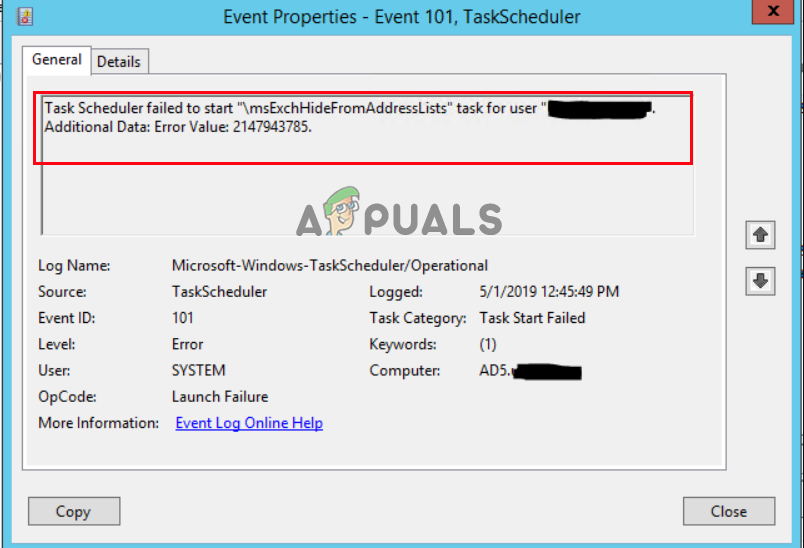
Therefore, we investigated it and found that Error 2147943785 is the denied permission error and is triggered when there is a mismatch with the permissions given. Fortunately, this is not as notorious as it seems and does not require performing complex troubleshooting steps. You can quickly fix the error by performing potential troubleshooting step-by-step instructions to get past the error. But before heading towards its potential solutions, let’s just first get to know about its culprits.
What Causes Task Scheduler Failed To Start Error Value 2147943785?
- Not Having User Right Assignment– It has been found that not having the user proper assignment is the main culprit of this error. When the user doesn’t have a proper login right then, the Windows Task Scheduler flashes this error message. Therefore, you must have proper user authority rights to avoid such errors.
- Change in User Password – In most instances, it has been recorded that this issue might also cause when there is a change in the password for the user that is meant to run the scheduled task. If this is the scenario, you can resolve the problem by configuring the task scheduler to stop the existing instance.
- The account is locked or deactivated – In many cases, it is seen that if in case the account is locked or not deactivated, then it starts causing issues, and you are likely to see Scheduled task failed to run and show the error message on the screen.
Now, as you are aware of the leading causes behind this error, you will be easily able to fix this error in no time.
Check for Account Status
The very first thing suggested to fix the error is to check for the Account status if it is expired or locked, or deactivated. So, if your account is locked or expired, it is most likely to cause issues when establishing connections, and, as a result, you cannot log in or access it.
So, it is suggested to check if all the tasks are running under your account and check if the account is locked or deactivated. Also, this is not good preparation for having user-based accounts when configuring the tasks. Despite this, you can also try creating the service account keen to the scheduled tasks and make the password never expire.
Assigning the User Right Assignment
It has been reported by the majority of users that assigning the User Right Assignment resolved the issue. So, if you are looking for a permanent and long-lasting solution, try considering using an “applicative” user. But if you use your own account, it might frequently change your password, which will result in applying this fix all over again. However, using an “applicative” account will help you to resolve the issue from its root.
To do so, follow the guided steps mentioned accordingly:
- Press Windows Key + R key to open the Run box and in the Run box type shell:common administrative tools command and hit Enter
- This will open the Administrative Tools window
- After that, look for the option Local Security Policy and tap on it.
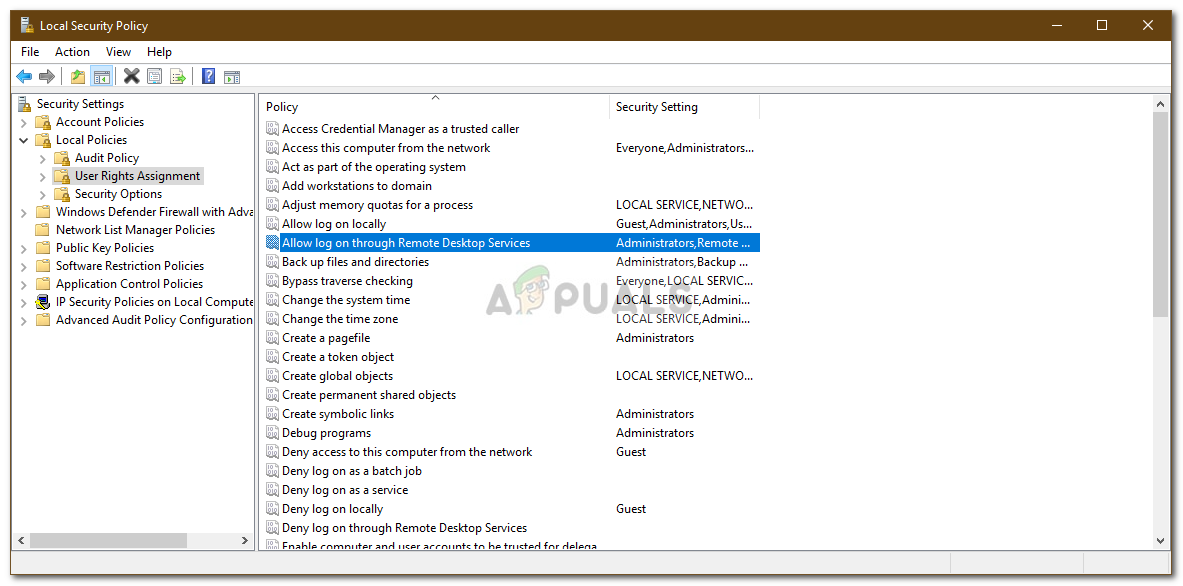
Local Security Policy - Under Local Security Policy, locate the User Rights Assignment option and click on it.
- Now select the option Log on as a batch job.
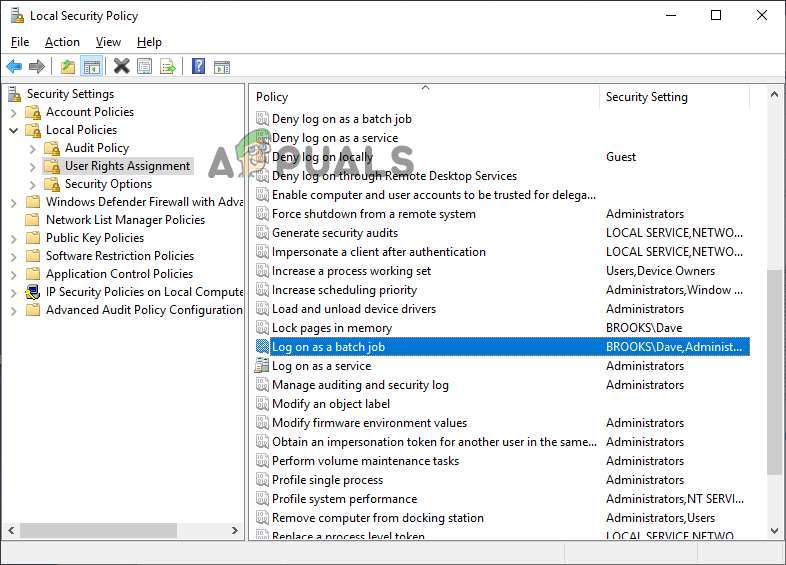
Click on Logon as a batch job. - Lastly, add the user to the list and save the changes.
Moreover, you can also try the below-given steps to convey an applicative account for the task which is causing the error:
- Hold the Windows key + R key to launch the Run dialog box and in the Rub box, type “taskschd.msc” and hit Enter to open up the Task Scheduler utility.

Type taskschd.msc in the Run to open Task Scheduler - Then inside the Task Scheduler, head to the task generating the issue and right-clicks on it, and then choose Properties from the context menu.

Viewing the properties of the affected task - Next, in the Properties screen of the exaggerated task, choose the General tab. After that go to Security Options and then click the Change User or Group button.
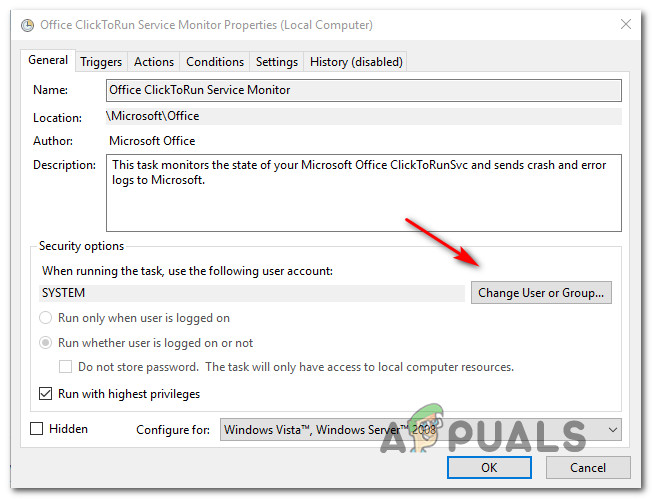
Changing the User or Group that is being used - Afterward, inside the Select User or Group window option, type Users and click on the option Check Names for validating the applicative object name.
- And as the “Users” is altered to the correct address, click Ok to save the changes.
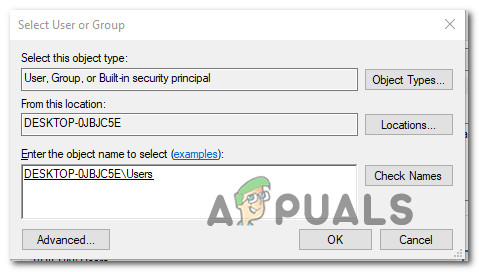
Modifying the default user - If you were asked for the authentication credentials, provide details for completing the operation.
- Repeat the process triggering the error earlier and then check if the error has been fixed.
Now, if you are on the domain controller, you just need to do this on the Group Policy.
- Press Windows + R simultaneously and in the run box, type “gpedit.msc” and hit Enter.

Open up the gpedit.msc utility - Now head to the Computer Configuration window and choose the Windows Settings option.
- Next, you need to click on the Security Settings and the Local Policies option.
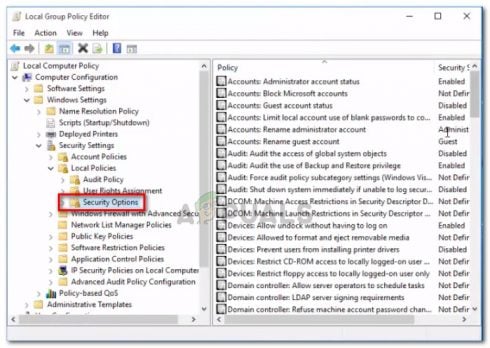
- Make approval on the User Rights Assignment options; log on as the batch job.
- Then add the domain, username account, and other information you require adding.
Check if the error is resolved, or head to the next possible solution. You can check our article on how to fix Task Scheduler Error Value 2147943726.
Configuring the Task Scheduler
As already discussed above, there might be instances where problems may cause due to password changes. So, if on being found that this is the exact cause applicable in your case, then try configuring the Task Scheduler to stop the existing instance.
Below is a quick guide to doing so:
- Open the Run Dialog by pressing the Win+R keys altogether. Then, type “taskschd.msc” on the box and hit Enter to launch Task Scheduler.

Type taskschd.msc in the Run to open Task Scheduler - Now on Task Scheduler, search for the task creating the problem. Once found, right-click on it and go for Properties.

Viewing the properties of the affected task - Under Properties, go for the Settings tab and change the drop-down menu at the bottom to Stop the existing instance.

Changing task ending rule - Now tap on OK, repeat the action previously causing the Task Scheduler Error Value 2147943785, and check if the issue has been resolved.
Well, such errors are primarily temporary and won’t last long. However, at times they become annoying as they won’t allow you to schedule a task on the Windows Task Scheduler. So, such problems need to be resolved first-hand. Here it is suggested not to forget to update the policy via GPUPDATE/Force.
I hope you find this blog helpful as it covers the error’s most probable causes as well as the potential solutions to fix the problem of the task scheduler failing to start error value 2147943785.





